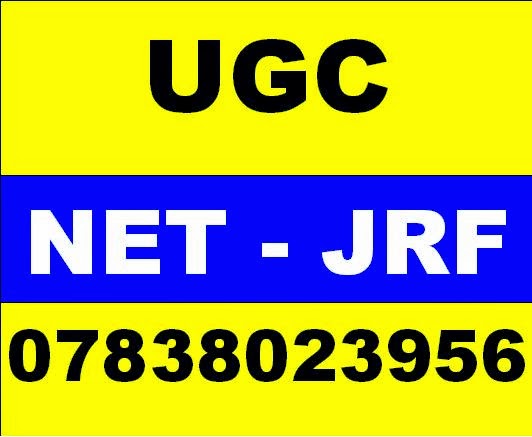Citation Analysis: When one author cites another author, a relationship is established. Citation analysis uses citations in scholarly works to establish that relationship (links). Many different links can be ascertained, such as links between authors, between scholarly works, between journals, between fields, or even between countries. Citations both from and to a certain document may be studied. The Science Citation Index began publication in 1961.
One very common
use of citation analysis is to determine the impact of a single author on a
given field by counting the number of times the author has been cited by
others. Citation indices, such as Institute for Scientific Information's Web of
Science, allow users to search forward in time from a known article to more
recent publications which cite the known item. Information scientists also use citation
analysis to quantitatively assess the core journal.
Google's
PageRank is based on the principle of citation analysis. Other bibliometrics
applications include: creating thesauri; measuring term frequencies; exploring
grammatical and syntactical structures of texts.
Data from
citation indexes can be analyzed to determine the popularity and impact of
specific articles, authors, and publications. However the limitation of
citation analysis is that they are often incomplete or biased; data has been
largely collected by hand (which is expensive), though citation indexes can
also be used; incorrect citing of sources occurs continually; thus, further
investigation is required to truly understand the rationale behind citing to
allow it to be confidently applied.
a) Co-citation Coupling: If papers A and B are both cited by paper
C, they may be said to be related to one another, even though they don't
directly cite each other. If papers A and B are both cited by many other
papers, they have a stronger relationship. The more papers they are cited by,
the stronger their relationship is. Co-citation coupling is a method used to
establish a subject similarity between two documents.
b) Bibliographic Coupling: Bibliographic coupling is the mirror
image of co-citation coupling. Bibliographic coupling links two papers that
cite the same articles, so that if papers A and B both cite paper C, they may
be said to be related, even though they don't directly cite each other. The
more papers they both cite, the stronger their relationship is.
“ugc net jrf labour laws”
“ugc net jrf sociology”
“ugc net jrf life science”
“ugc net jrf exam”
“ugc net jrf journalism”
“ugc net jrf journalism”
“ugc net jrf education”
“ugc net jrf economics”
“ugc net jrf psychology”
“ugc net jrf psychology”
“ugc net jrf mass
communication”
“ugc net jrf geography”
“ugc net jrf geography”
“ugc net jrf paper 1”
“ugc net jrf home science”
“ugc net jrf history”
“ugc net jrf political science”
“ugc net jrf human resource”
“ugc net jrf hindi”
“ugc net jrf commerce”
“ugc net jrf management”
“ugc net jrf computer science”
“ugc net jrf political science”
“ugc net jrf human resource”
“ugc net jrf hindi”
“ugc net jrf commerce”
“ugc net jrf management”
“ugc net jrf computer science”
“ugc net jrf English”
“ugc net jrf coaching”
“ugc net jrf 1st compulsory paper”
“ugc net jrf library & information science”
“ugc net jrf study material”
global teachers academy
D-2, Arjun Nagar Safdarjung Enclave, New Delhi
Near Green Park Metro Station
Ph. 078-380-239-56 , 078-380-243-65
http://www.gtah.net/
“ugc net jrf 1st compulsory paper”
“ugc net jrf library & information science”
“ugc net jrf study material”
global teachers academy
D-2, Arjun Nagar Safdarjung Enclave, New Delhi
Near Green Park Metro Station
Ph. 078-380-239-56 , 078-380-243-65
http://www.gtah.net/
www.ugcnetd.com
https://www.facebook.com/ugcnetcoachingdelhiindia
https://www.facebook.com/gtadh?ref=hl
https://www.facebook.com/ugcnetcoaching.delhi
https://www.facebook.com/ugcnetcoachingdelhiindia
https://www.facebook.com/gtadh?ref=hl
https://www.facebook.com/ugcnetcoaching.delhi
http://www.gtah.net/about-us.php
http://www.gtah.net/ugc-net.php
http://www.gtah.net/jnu-du.php
http://www.gtah.net/enquiry-now.php
http://www.gtah.net/results.php
http://www.gtah.net/contact-us.php
http://www.gtah.net/ugc-net.php
http://www.gtah.net/jnu-du.php
http://www.gtah.net/enquiry-now.php
http://www.gtah.net/results.php
http://www.gtah.net/contact-us.php
https://plus.google.com/+Ugcnetd/posts
|
https://www.facebook.com/ugcnetcoachings
http://in.linkedin.com/in/ugcnetcoaching http://ugcnetjrfcoaching.wordpress.com |
|
http://ugcnetd.wordpress.com
|
|
http://ugcnetcoachingugc.wordpress.com/
|
|
http://ugcnetcoachings.wordpress.com/
|
|
http://ugcnetjrfcoachings.blogspot.in
|
|
http://ugcnetgtah.blogspot.in/
|
|
http://netexamcoaching.blogspot.in/
|
|
http://ugcnetpsychologycoaching.blogspot.in/
|
|
http://ugcnetcommercecoaching.blogspot.in/
|
|
http://ugcnetmanagementcoaching.blogspot.in/
|
|
http://ugcnetexamcoaching.blogspot.in/
|
|
http://ugcnetenglishugc.blogspot.in/
|
|
http://ugcnetcoachings.blogspot.in/
|
|
http://ugcnetonlinecoachng.blogspot.in/
|
|
https://www.youtube.com/watch?v=OMJnpTIwKuY
|
|
https://www.youtube.com/watch?v=yIIl90pCwAI
|
|
https://www.youtube.com/watch?v=BfgfKMwfpsk
|
|
https://www.youtube.com/watch?v=z8oNow4w9-A
|
|
https://www.youtube.com/watch?v=yMRtgqHPnfA
|
|
https://www.youtube.com/watch?v=mzW2NoQZUbM
|
|
https://www.youtube.com/watch?v=ePCdZjXmVgc
|
|
https://www.youtube.com/watch?v=XV9rT3b2LZI
|
|
https://www.youtube.com/watch?v=2UouOJJtCyc
|
|
https://www.youtube.com/watch?v=m1kzxQVJdds
|
|
https://www.youtube.com/watch?v=0OsSCh8wpSU
|
|
https://www.youtube.com/watch?v=owZeCkfMas8
|
|
https://www.youtube.com/watch?v=Lj0m3Bf8D5A
|
|
https://www.youtube.com/watch?v=UOuqF5DcEUw
|
|
https://www.youtube.com/watch?v=PDb46OwJESs
|
|
https://www.youtube.com/watch?v=34fYjBW_L0M
|
|
https://www.youtube.com/watch?v=lCc8lY8PpjU
|

No comments:
Post a Comment